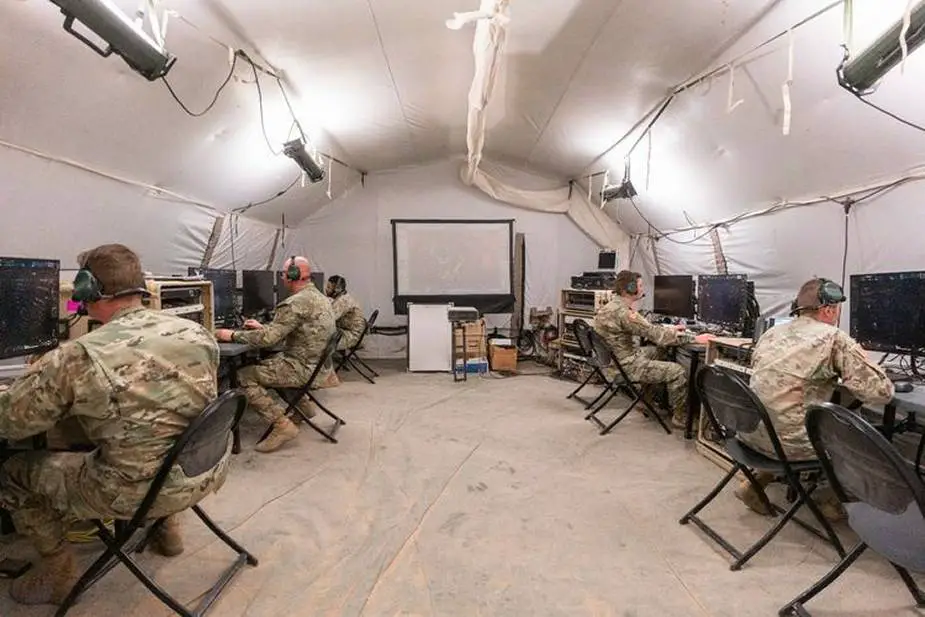Breaking news
Northrop Grumman IBCS ready for fielding and connecting battlespace.
Northrop Grumman’s Integrated Battle Command System (IBCS) completed the final, demanding assessment, during its recent Operational Test and Evaluation (IOT&E). Completion of IOT&E is the last major test event before the U.S. Army makes the decision to move the program from low-rate initial production to full-rate production, allowing IBCS to be fielded around the world.
Follow Army Recognition on Google News at this link

Inside the Integrated Battle Command System operations center at White Sands Missile Range, New Mexico (Picture source: U.S. Army)
Beginning in January, at White Sands Missile Range (WSMR), New Mexico, IBCS began a series of operational flight tests. Throughout the 10-month period, soldiers operated IBCS in complex test environments encompassing a broad spectrum of attack and defense scenarios under realistic operating conditions, stressing the system as never before, and under intense scrutiny by U.S. Army independent evaluators.
“Throughout IOT&E, we’ve shown how IBCS enables the warfighter to make more informed and faster decisions,” said Christine Harbison, vice president and general manager, combat systems and mission readiness, Northrop Grumman. “IBCS is ready for today’s threats and those of the future, making Joint All-Domain Command and Control (JADC2) a reality.”
Across two IO&TE flight tests at WSMR, IBCS detected, tracked, and intercept threats that included: a high speed, high performance tactical ballistic missile and two cruise missile surrogates during a stressing electronic attack.
Once fielded, IBCS will extend the battlespace beyond what a single sensor tied to a single effector can provide, allowing the use of a sensor or effector’s full range and enabling the warfighter to quickly see and act on data across the entire battlefield.
Northrop Grumman designed IBCS with a modular, open, and scalable system architecture that is foundational to integrating all available assets in the battlespace, regardless of source, service, or domain. Its architecture enables the efficient and affordable integration of current and future systems and extends the battlespace by disaggregating sensors and effectors. Through numerous successful tests and demonstrations, IBCS has validated the ability to connect and fuse multi-service sensor data to multi-service weapons, demonstrating JADC2 capabilities.



















